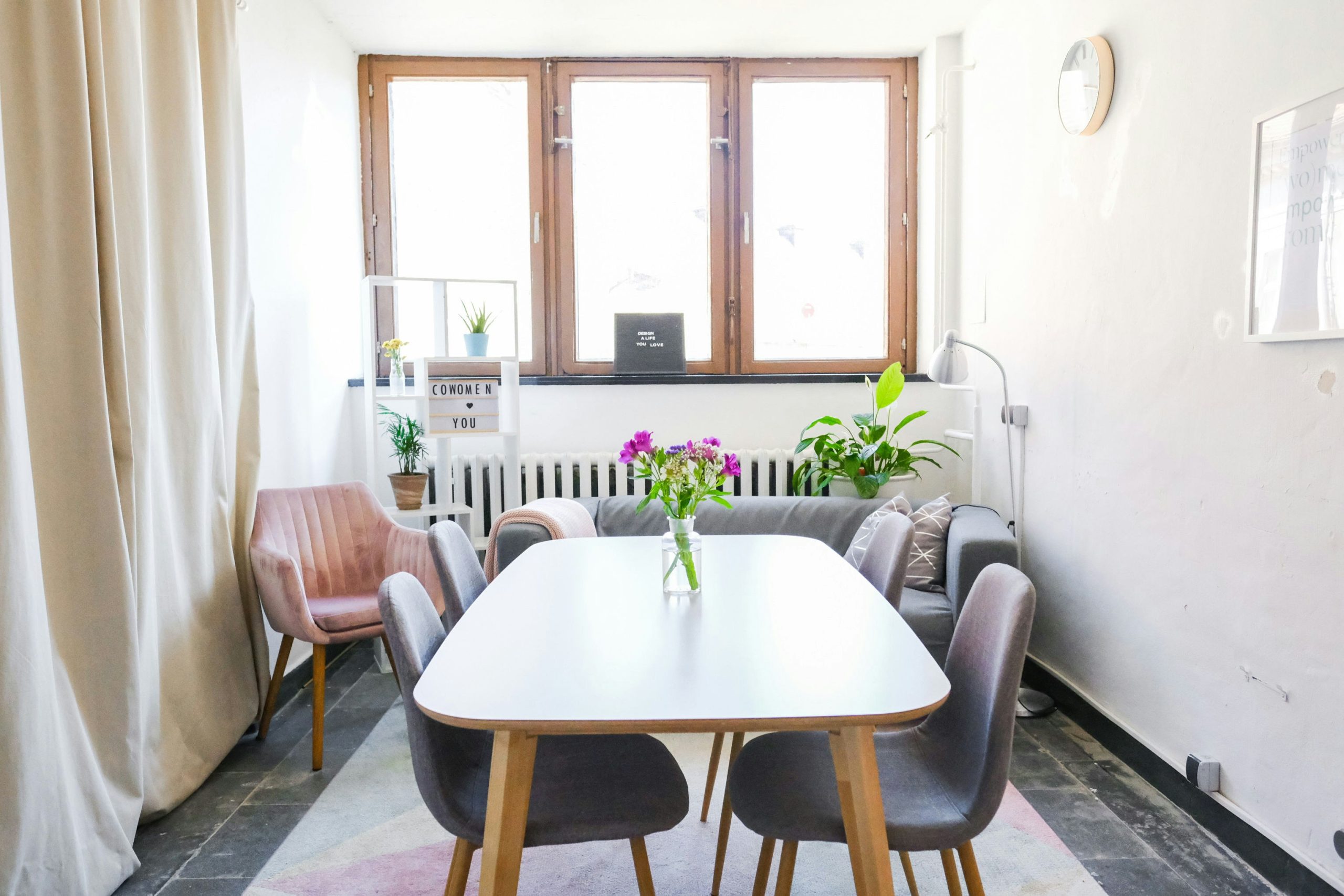The way we work has transformed dramatically over the past few years, and office spaces have had to evolve just as quickly. Remote work, hybrid setups, and new priorities surrounding employee well-being are changing what today’s workplaces should look like.
Looking ahead to 2025, we’re stepping into an era of innovative, adaptable, and employee-centered design. From biophilic elements that bring nature indoors to smart technology that responds to human needs, these design trends are poised to redefine the modern office.
Curious about what’s in store? Here’s a breakdown of the key office interior design trends predicted to shape workspaces in 2025.
1. Biophilic Design – Bringing Nature Indoors
Biophilic design isn’t new, but it’s quickly becoming a must-have for modern offices. Employees are increasingly seeking workspaces that reduce stress and foster creativity. By incorporating natural elements like plants, water features, and sunlight, companies can create environments that feel vibrant and restorative.
Why It Matters
Studies have shown that exposure to nature in the workplace can reduce stress by up to 37%, boost concentration, and even increase productivity. Offices in 2025 will likely feature indoor gardens, living walls, and large windows that maximize natural light.
How to Implement This Trend
- Add low-maintenance indoor plants like snake plants or pothos to desks and communal areas.
- Opt for natural materials like wood and stone for office furniture and finishes.
- Incorporate large windows or skylights to flood the space with daylight.
2. Flexible and Modular Spaces
Gone are the days of rigid office layouts with cubicles and static meeting rooms. Flexibility is the new buzzword in office design. Employees want spaces that adapt to their tasks, whether they’re collaborating with a team or working solo.
The Future of Flexibility
Modular furniture, reconfigurable layouts, and movable walls are expected to dominate 2025 office spaces. Open-plan offices will continue to evolve into dynamic areas that can be customized for a range of uses.
Designing for Flexibility
- Use modular sofas or tables that can be rearranged for casual meetings or individual work.
- Include dedicated zones for quiet work, brainstorming, and relaxation to meet diverse needs.
- Invest in adjustable desks and seating to support comfort and mobility.
3. Wellness-Centric Workspaces
Employee well-being is no longer an afterthought. Companies are realizing that healthier employees mean happier and more productive employees. Look for 2025 office designs to prioritize both physical and mental well-being.
What Wellness Looks Like
From ergonomic furniture to meditation pods, wellness-centered designs make the workplace feel supportive rather than stressful. Many offices are also integrating spaces for physical activity, like small gyms or yoga areas.
Wellness Features to Consider
- Install ergonomic chairs, standing desks, and lumbar support cushions.
- Design relaxation spaces with calming colors, soft lighting, and comfortable seating.
- Add napping pods or “recharge rooms” for employees to take breaks during the day.
4. Smart Offices with AI and IoT
Technology continues to embed itself into every facet of our lives, and workspaces are no exception. Smart offices—where Internet of Things (IoT) devices and Artificial Intelligence (AI) work together—will be the norm by 2025.
What This Means for Workplaces
Imagine an office where lighting adjusts to match employee schedules, meeting rooms book themselves, and voice-activated assistants handle reminders. These advancements aim to improve efficiency while enhancing the user experience.
Tech Upgrades to Watch
- Smart thermostats and lighting systems that adapt to occupancy and time of day.
- Meeting room booking apps that sync seamlessly with your office calendar.
- AI-driven systems for optimizing resource use, like managing energy consumption.
5. Sustainability at the Core
The push for sustainable, eco-friendly design continues to gain traction. By 2025, businesses will focus heavily on reducing their environmental footprint. Offices will be outfitted with energy-efficient systems and sustainably made materials.
Green Features on the Rise
Carbon-neutral construction, upcycled furniture, and renewable energy sources are becoming mainstream. This isn’t just a trend—it’s a necessity for companies looking to showcase their corporate responsibility.
Ways to Go Green
- Install energy-efficient LED lighting and solar panels where possible.
- Source furniture made from recycled or repurposed materials.
- Offer composting and improved recycling options in the workplace.
6. Home-Like Comfort in the Workplace
Blurring the line between home and office design is becoming increasingly popular. Known as “resimercial” design, this trend brings the warmth and comfort of home into corporate environments.
Why Employees Love It
With work-from-home setups becoming the norm, employees appreciate home-like touches in the office. Think plush seating, cozy nooks for downtime, and even decor accessories like area rugs and artwork.
Making Offices Feel Like Home
- Set up cozy lounge areas with bean bags or sectional sofas.
- Incorporate soft, texture-heavy materials like wool or velvet in furnishings.
- Add playful design elements like gallery walls or statement lighting.
7. Diversity in Design
Catering to diverse employee needs will define 2025 workplace design. Inclusive features will ensure employees feel comfortable, respected, and valued, regardless of their circumstances.
Examples of Inclusive Design
From gender-neutral restrooms to accessible furniture and layouts, inclusivity doesn’t just benefit employees—it improves company culture. Expect to see offices that reflect a deeper understanding of modern diversity.
How to Build Inclusivity into Your Space
- Choose adjustable furniture suited for employees with disabilities.
- Design quiet zones for introverts or employees needing minimal distractions.
- Ensure facilities like restrooms and break areas are accessible for everyone.
Take Your Office to the Next Level
The predicted office interior design trends for 2025 reflect a deeper focus on employees while leveraging smart and sustainable solutions. From biophilic design to AI-enhanced workspaces, these innovations aren’t just about aesthetics—they hold the potential to profoundly impact productivity, morale, and overall business success.
Looking to revamp your office? It’s time to start planning ahead. By adopting these design trends with Ad Evo, businesses can create workspaces that not only look amazing but also serve the needs of a modern, dynamic workforce.


